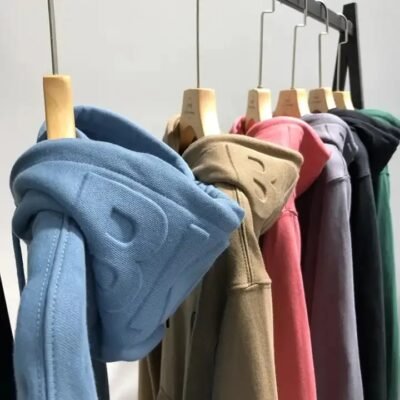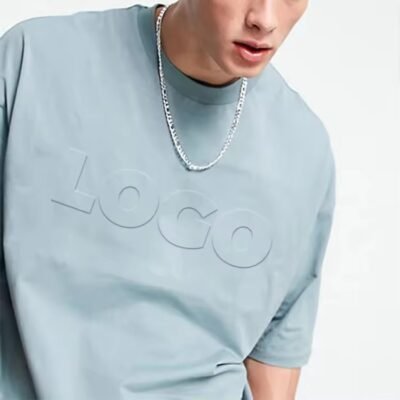Fashion is a constantly evolving expression of culture, creativity, and personal identity. What people wear speaks volumes about societal norms, global influences, and individualism. In 2024, the world of fashion is more diverse than ever, with trends ranging from futuristic tech-infused garments to a resurgence of vintage styles. Let’s take a look at the most popular clothing trends globally, influenced by sustainability, technology, and cultural elements.
1. Sustainable and Eco-Friendly Fashion
Sustainability has taken the center stage in the fashion world. The rise of environmental consciousness has led to a demand for eco-friendly fabrics, ethical production processes, and brands that advocate for reduced carbon footprints. Brands are focusing on natural fibers like organic cotton, hemp, and bamboo, while others are experimenting with innovative materials like plant-based leathers and recycled plastics.
Moreover, the circular fashion model—where clothes are recycled, upcycled, or repurposed instead of being discarded—has gained traction. Thrift shopping and vintage clothing are booming, as consumers, especially millennials and Gen Z, are seeking unique pieces with a story, while simultaneously reducing waste.
2. Athleisure: Comfort Meets Style
Athleisure has been a trend for several years, and it shows no signs of slowing down. This style, blending athletic wear with casual fashion, has become the go-to look for people prioritizing comfort and functionality without sacrificing style. Brands like Nike, Lululemon, and Adidas have been leaders in this category, with sports bras, leggings, joggers, and oversized hoodies making their way into mainstream fashion.
The pandemic accelerated the shift toward casual and comfortable clothing as more people worked from home, but athleisure has transcended home life, becoming appropriate for casual outings, social gatherings, and even the workplace in more relaxed environments.
3. Y2K Fashion Revival
The early 2000s, or Y2K era, has made a full comeback in the fashion world. Nostalgia plays a massive role in why this trend has resurfaced, with Gen Z and millennials finding inspiration in the bold and experimental fashion of the early 2000s. Low-rise jeans, baby tees, cargo pants, bucket hats, and chunky sneakers have all become popular once again.
Glittery makeup, quirky accessories, and bold prints are also hallmarks of Y2K fashion. This trend is all about making bold statements, celebrating individuality, and challenging traditional fashion norms. Celebrities like Dua Lipa and Bella Hadid have been instrumental in bringing these looks back into the spotlight.
4. Tech-Infused Fashion: The Future is Here
Technology is reshaping the fashion landscape. From smart fabrics that can regulate temperature or monitor vital signs to clothes with embedded LEDs, the future of fashion is as much about functionality as it is about aesthetics. One of the most notable trends in 2024 is wearable tech, such as jackets with built-in phone chargers, fitness-tracking leggings, or fabrics embedded with nanotechnology to resist stains and bacteria.
Additionally, the metaverse has influenced fashion, with digital fashion becoming more mainstream. Virtual garments, NFTs (non-fungible tokens), and avatar clothing allow individuals to express their style in the digital realm, where brands like Balenciaga and Gucci are creating exclusive collections for the virtual world.
5. Gender-Neutral and Fluid Fashion
Gender-neutral fashion is becoming increasingly popular as society continues to challenge traditional gender roles and embrace inclusivity. More designers are creating collections that blur the lines between menswear and womenswear, allowing for greater freedom of expression. Oversized silhouettes, unisex cuts, and minimalist designs are hallmarks of this movement.
Brands like Telfar and JW Anderson have made waves by promoting inclusivity in fashion, offering pieces that can be worn by anyone, regardless of gender. Fashion houses are responding to the growing demand for androgynous designs by offering collections that appeal to people who don’t want to be restricted by conventional fashion norms.
6. Maximalism: More is More
In contrast to the minimalist trend that dominated the early 2010s, maximalism has emerged as a major force in fashion. This trend is characterized by bold patterns, bright colors, and an abundance of textures. It’s about embracing excess and creating looks that are unapologetically loud and expressive.
Maximalism often draws from eclectic sources, such as vintage fashion, cultural references, and art movements. Designers like Alessandro Michele of Gucci have been at the forefront of this movement, pushing boundaries with vibrant patterns, quirky accessories, and dramatic layering. It’s a rebellion against the restrained and minimalist aesthetics that preceded it.
7. Oversized Silhouettes
Oversized clothing, from jackets to pants, has been a strong trend in recent years and remains at the forefront of fashion in 2024. This trend offers both comfort and a chic, laid-back aesthetic. Oversized blazers, trench coats, and wide-leg trousers dominate streetwear and high-fashion runways alike.
The oversized silhouette trend is inclusive and adaptable, making it accessible to a wide range of body types and personal styles. It challenges traditional ideas of form-fitting clothing, offering a more relaxed approach to fashion. Pairing oversized pieces with tailored items, such as a large blazer over a sleek bodysuit, adds balance and sophistication.
8. Vintage and Retro Revival
Vintage fashion has always had a place in the fashion world, but in 2024, it’s more popular than ever. Beyond the Y2K revival, fashionistas are pulling inspiration from the 70s, 80s, and 90s. Thrift stores and vintage boutiques are now hotspots for discovering unique, one-of-a-kind pieces that set wearers apart from the mass-produced fast fashion available today.
This return to retro fashion is also a response to fast fashion’s negative environmental impact. By re-wearing and reusing older garments, consumers are making a conscious effort to reduce waste and promote sustainability.
9. Cultural Appreciation in Fashion
As the world becomes more connected, fashion trends are borrowing from a variety of cultures. Designers and fashion enthusiasts are embracing traditional patterns, fabrics, and silhouettes from around the globe. African prints, Japanese kimono-inspired dresses, Indian saris, and Indigenous textiles have all made their way into mainstream fashion, showcasing a deep appreciation for global craftsmanship.
However, there is a fine line between cultural appreciation and appropriation, and the fashion industry is increasingly aware of the importance of respecting the origins and significance of the styles being adopted. Collaborative efforts between designers and indigenous creators have become more common to ensure authenticity and ethical representation.
Conclusion
Fashion in 2024 reflects a world in transition. While some trends are a direct response to global challenges like climate change, others are inspired by a longing for the past or a leap into the future. What remains constant is the need for clothing that resonates with individual identity, personal comfort, and cultural influences. From sustainable choices to bold maximalism, fashion continues to be a powerful form of expression, transcending borders and redefining beauty in countless ways.








